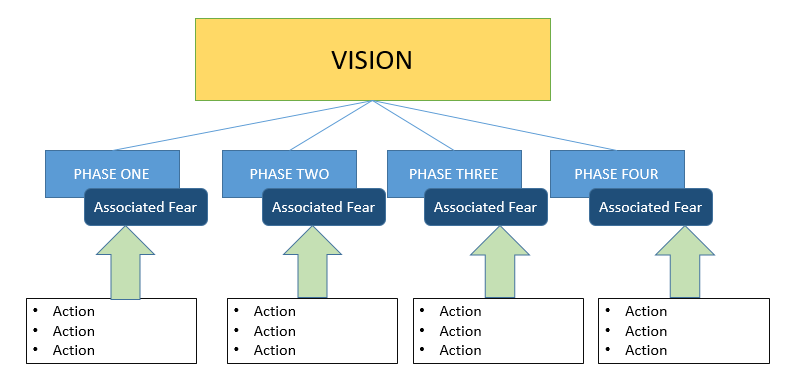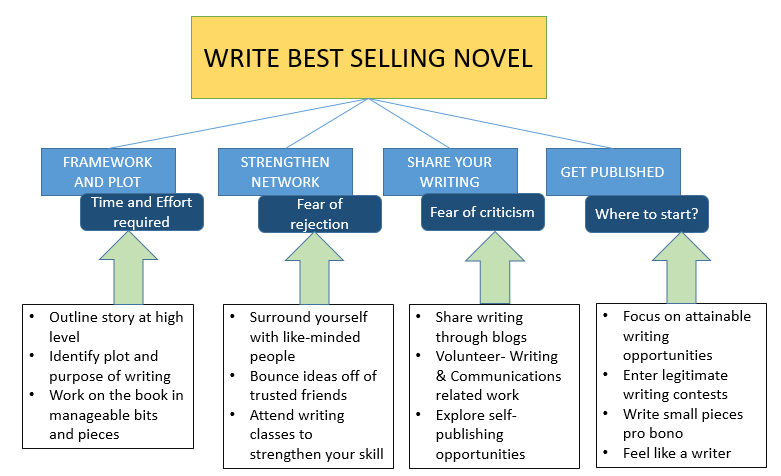Do you ever feel as if you are a spectator in your own life? Is your mantra “I’ll get to it tomorrow”? Are your big goals frustrating to achieve because you simply do not know where and how to start? As an Entrepreneur, and a perfectionist, the scenario above is all too familiar to me. If any of these sound familiar, you may be suffering from analysis paralysis.
Many Entrepreneurs start their dream career with the grand scale vision already formed. We often begin our journey with the desired end state in mind. Thus, we tend to suffer from the fear of getting started. Listening to your personal fear on getting started can be a double-edged sword; you ultimately have two options:
- Stay in your state of fear and paralysis, and hope that tomorrow is another day
OR
2. Harness the power of fear and embrace it as a motivator
If you’re struggling on where to begin, leverage the tips below to lay the foundation of your journey:
- Defining the Dream
The major step to success is having a clear vision of what you want to achieve. Share your vision with trusted and positive people in your network. The initial conversations around your vision will help you determine if there is an appetite for your idea or business. Sharing your vision is particularly helpful when it comes to holding yourself accountable (i.e. Saying you will achieve a task, and actually achieving that task). Keep in mind that people genuinely want to help each other out. If you are able to clearly articulate your vision, you’ll likely attract people who want to help you succeed on your journey.
2. Break Down the Vision into Smaller, Attainable Goals
It’s great to dream big, but let’s face it, the big picture is daunting and paralyzing. Breaking your vision into smaller pieces will make getting started easier. If fear is your primary reason for not trying, group your vision into phases and related fears. Under each phase, structure attainable and achievable action items that will work toward accomplishing the related phase, as well as conquering your associated fear head on. If you happen to be a visual person like me, the diagram below should help illustrate the framework:

One of my goals is to write a best-selling novel. That dream in itself is pretty daunting; with the time and effort involved as well as other fears that I am currently trying to overcome. Using the diagram above, I was able to breakdown my vision into an attainable and structured roadmap, or to put simply, a plan of action:

Now that you’ve got a plan of action in place, it’s time to focus on mitigating your fears.
3.Start Before You’re Ready
From this perfectionist’s point of view, start before you’re ready! If you wait until you are ready, or for when you feel ready, you will be waiting for a very long time as you will never BE ready. You can plan, and mitigate risks and failures to the absolute best of your abilities, but there will always be a reason to stop you from getting started. What you need to focus on, is becoming the reason to get started. Failure is inevitable – find out what your most crippling fears are and find ways to overcome them on a day-to-day basis. For example, many people suffer from a fear of public speaking. In this situation, the logical way of overcoming this fear would be to engage in opportunities to speak up more. There are probably a thousand and one reasons not to start, but there’s one question to ask yourself that will help you start; “Will I regret not attempting this in my lifetime?” If the answer is yes, do yourself a favour and get started!
4. Stop Being a Critic – Give Yourself the Gift of Constructive Criticism
You’ve got a plan and a vision in mind. Surrounding yourself with like-minded and positive people will keep you focused and committed to striving toward your vision. Your network will be a source of inspiration and support on your journey. Be patient and kind to yourself, as you are laying the foundation for success – it won’t happen overnight. If you happen to fall into the trap of becoming your own worst enemy by being overly critical of yourself, break the cycle. In our professional careers, constructive criticism and feedback is valuable in encouraging professional growth. If you have ever provided constructive feedback to your colleagues, employees, even friends, you’ve likely done so in an open, collaborative and polite manner. You’ve likely had constructive feedback and criticism shared to you to help in your career progression. Take a lesson from this – stop being a critic of yourself, and share constructive feedback with yourself. We are so willing to foster an environment of collaboration and trust with our colleagues, yet we come down hard on ourselves. Be your own champion. Instead of thinking “I should’ve done that better”, change your perspective and ask yourself “how can I do this differently next time?” This approach will help you learn and improve, and will ultimately break the cycle of negative thinking that can stall your progress.
As human beings, we are meant to grow, adapt, mature, change and survive. Fear is a sign of evolution and resilience, ultimately it is growth. We are resilient and capable of learning through action, not inaction. The clock is ticking down for all of us. Given this obvious fact, I want to reiterate the question “Will I regret not attempting this in my lifetime?” If your answer is yes, start now. Don’t continue being the spectator in your own life.
For helpful hints on forming your vision further, check out my blog: Storytelling (to be released during the week of March 20). This blog will help you leverage your critical thinking skills and craft your idea into a pitch.
Follow up your progress from this blog post with “The Growth Potential” to be released at the end of Q2, beginning of Q3 2017.

